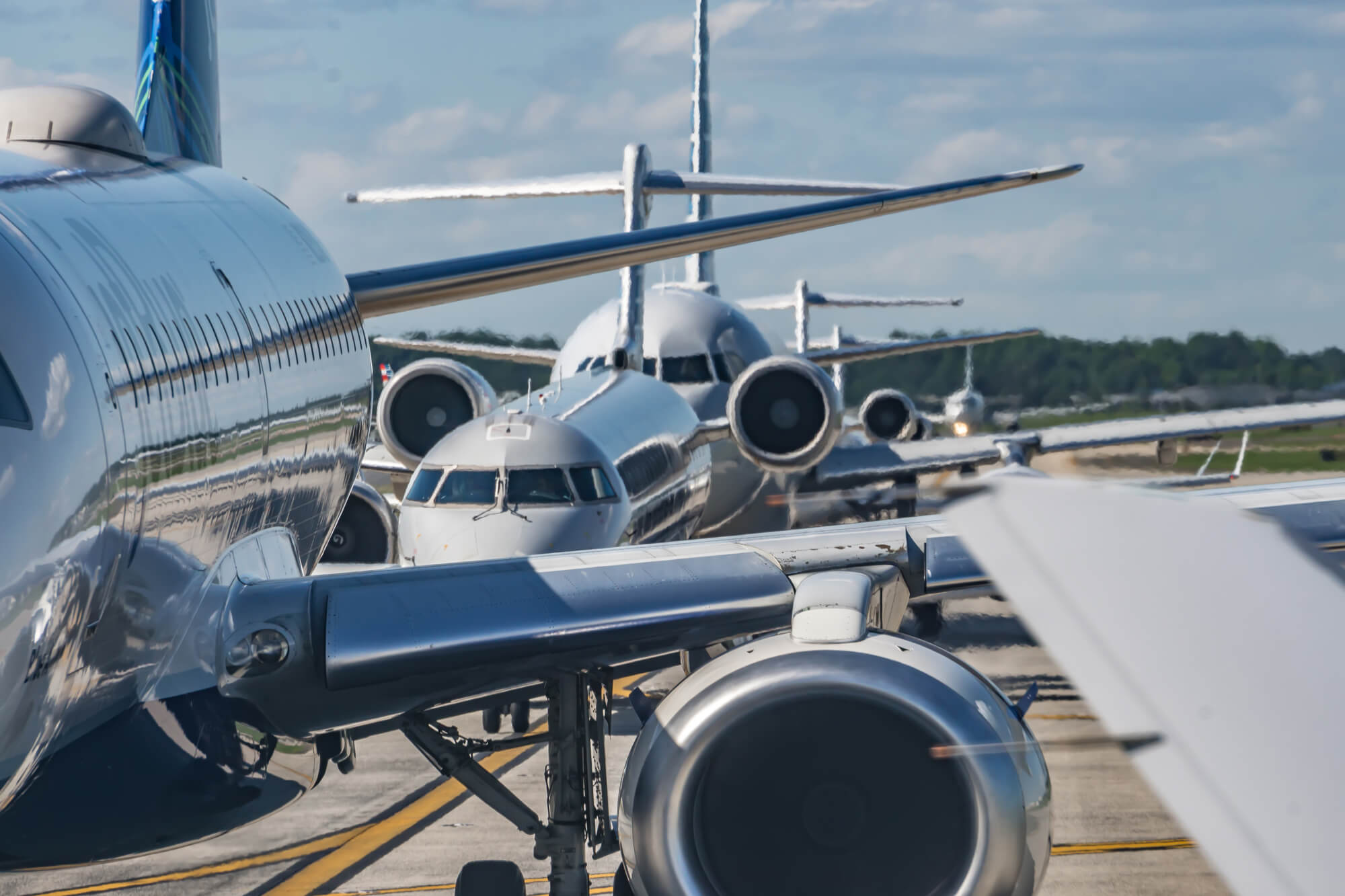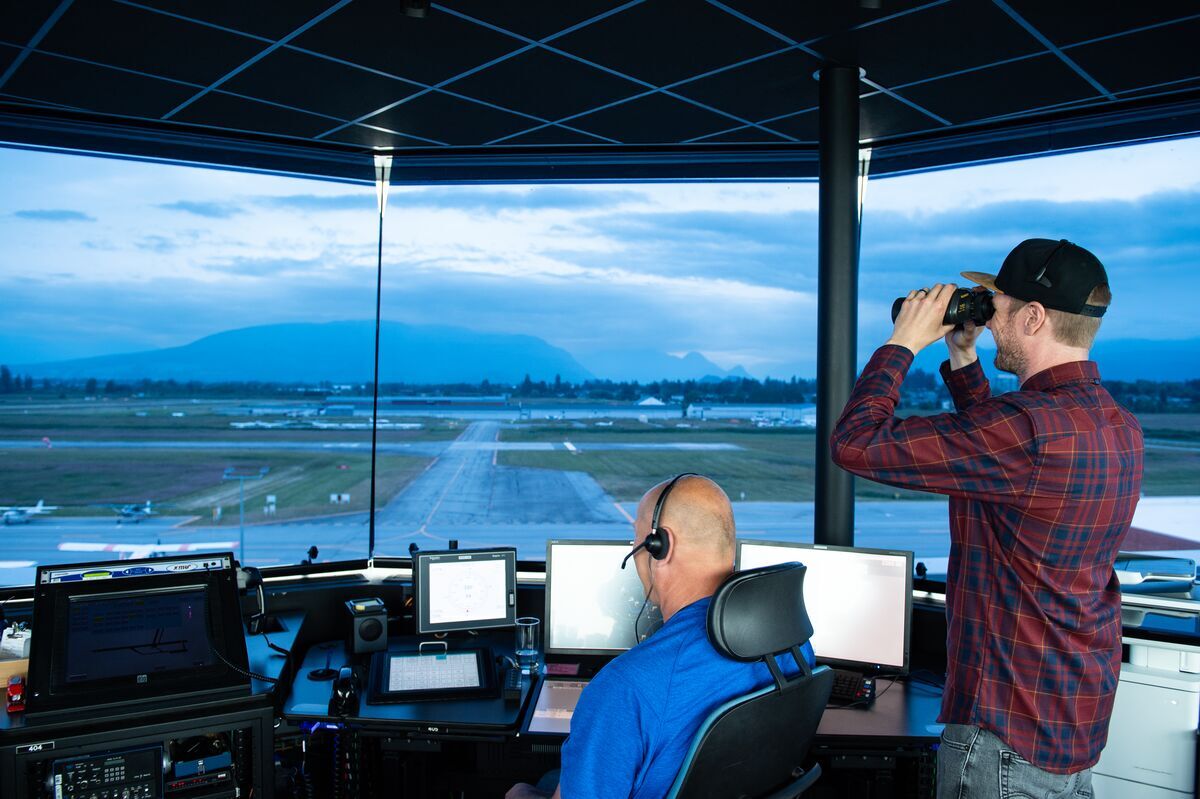







July 28, 2023
Air travel is an essential mode of transportation that connects people and places around the world. When managing Canada’s airspace, safety is always our central focus. At NAV CANADA, teams across the country support efforts to keep aircraft moving on time and on schedule. We’re part of a highly interconnected and interdependent system that requires many players including airlines, airports, security agencies and various ground services – to be at the top of their game.
However, there are times when travel plans can be disrupted for passengers and airlines alike. Delays can arise from adverse weather such as thunderstorms and snowstorms, maintenance and construction at airports, or the operational capacity of airlines, airports, third party providers and our air navigation system.
Traffic management initiatives (TMIs) are an important tool in the air traffic system. These initiatives contribute to the safe and orderly movement of air traffic and are used by air traffic control organizations globally in the regular course of day-to-day operations.
The basic concept is simple – if the number of aircraft exceeds the given capacity of any part of the aviation ecosystem, air traffic controllers must space traffic to keep it manageable. Typically, that means reducing – or “metering” – the number of aircraft coming and going to a particular airport so that the system does not get overwhelmed; safely regulating the flow of air traffic.

Why traffic management initiatives are used
During peak periods, air traffic controllers at major airports in Canada maximize the arrival and departure rates to support airline schedules and demand for air travel. In planning this rate, the team must take into consideration a number of factors. These factors can range from weather and visibility, the number of arrivals versus departures, runway conditions and occupancy times, airport construction, gate or taxiway layout and availability, as well as the traffic mix (types and weight/size of aircraft) in the surrounding airspace.
These factors are assessed on an ongoing basis throughout the day in coordination with airlines and airports to determine the optimal and safe movement rate for periods of the day. While NAV CANADA must respond to all these factors, it has limited control over most of these occurrences and must prioritize safety above all while working actively to maintain high-capacity levels.
Delays can become necessary to safely balance demand to ensure airport infrastructure such as runways, taxiways and gates, the busy airspace that surrounds it and the staff of various aviation organizations does not exceed their capacity. It’s a highly sensitive system with sometimes seemingly small factors meaning changes to how we move traffic.
For example, on a rainy day it may take the pilot of an aircraft a little more distance on the runway to brake, slow down and exit on to one of the taxiways. That extra time on the runway means that air traffic controllers have to slow down the next aircraft to ensure safe distancing. A similar situation occurs when a small aircraft is following a large aircraft – the smaller aircraft is affected by wake turbulence and therefore needs to be spaced out more for safety.
“These interactions between two aircraft are business as usual but start multiplying these tactical situations by hundreds of aircraft over several hours and we have a compounding impact,” says Jonathan Bagg, Director of Stakeholder and Industry Relations at NAV CANADA. “There are many, many interactions like this in Canada’s aviation system that happen every day. They create delays – even when every part of the system has all their ducks - or planes - in a row.
“Delays in the air transport system are a global phenomenon, but certain aspects of the Canadian ecosystem are unique,” says Bagg. “Our vast distances make us more reliant on air transportation than most countries. Our weather can be very harsh and challenging, and it can take us more time to recover from disruption compared to countries where infrastructure, equipment and resources are less spread out geographically.”

People power
One factor that has been getting its share of attention across the globe has been staffing.
"The pandemic changed the industry’s work force in many ways; whether it be pilots, air traffic services professionals or airport roles, every part of the aviation system is in a situation where demand for skilled workers is high,” said Bagg. “While they get a lot of attention – and that’s fair – staffing delays are declining as the work force is gradually built back.”
In cases where NAV CANADA staffing levels affect service, the organization works diligently to mitigate the impact on the aviation ecosystem. NAV CANADA will bring in reinforcements, ask employees to extend their shifts or start early to assist with the increased workload. Employees’ dedication to their profession and safety are paramount to NAV CANADA’s success and the company’s ability to manage the shifting needs of Canada’s aviation industry.
“We take these situations very seriously. Its really and truly an all hands on deck approach to respond to challenges and minimize our impact on airlines and the traveling public,” says Bagg. Ensuring that Canada’s air navigation service provider is adequately staffed to meet the evolving needs of Canada’s aviation industry is one of the many ways the company is helping to reduce the frequency of delays. The organization employs various roles, including air traffic controllers, flight service specialists, technologists, pilots, engineers and support staff. To meet the increasing demand for staff, NAV CANADA has expanded its training programs and is actively recruiting and training new employees across Canada.
NAV CANADA’s front-line air traffic services training programs are running at full capacity. Currently, more than 400 employees are in training and more than 600 individuals will enter NAV CANADA’s training programs in 2024 and 2025 combined.

What is a Ground Delay Program?
When disruptions such as severe weather lead to pent up traffic volume that exceeds capacity, a Traffic Management Initiative may be implemented. One key tool is the Ground Delay Program (GDP). A GDP helps the system manage the amount of traffic at an airport by temporarily delaying them at their departure airport over a defined period. Traffic management initiatives such as GDPs can be used to help ensure airspace and airport infrastructure do not get overwhelmed or gridlocked and, most importantly, to safely regulate the flow of air traffic. During a GDP, aircraft bound for a particular airport are held at their departure airport for a certain amount of time, helping to manage arrivals at the destination. It is important to note that while NAV CANADA implements GDPs, they can arise from a variety of events; the most common cause is adverse weather.
Working together
It takes a significant cross-sector effort in a complex and sensitive system to achieve on time performance, and every partner in the system needs to do its best to keep delays to a minimum.
The sharing of data is critical to that. “Its an obvious analogy but its like a sports team – to function, every player needs to play their part and understand how their roles are interconnected,” says Bagg. “This makes data sharing critical – so we can look over the horizon and each plan our operation to be most supportive of other players on the team.”
In this context, NAV CANADA is making big investments in technology and data with the goal of bringing data integration across industry to the next level.
“The future will be one where everyone is looking at the exact same flight planning and capacity data, knows the optimal route in a manner that’s adaptive to changing conditions and knows where their aircraft needs to be and when during every point in the journey,” says Bagg. “This will bring a greater level of predictability in the system, even when the weather isn’t cooperating.”
Passengers impacted by delays are always advised to check the status of their flights with their airlines for the latest information.
Canadians and permanent residents interested in pursuing a career with Canada’s air navigation service provider are invited to learn about and explore NAV CANADA’s current opportunities.